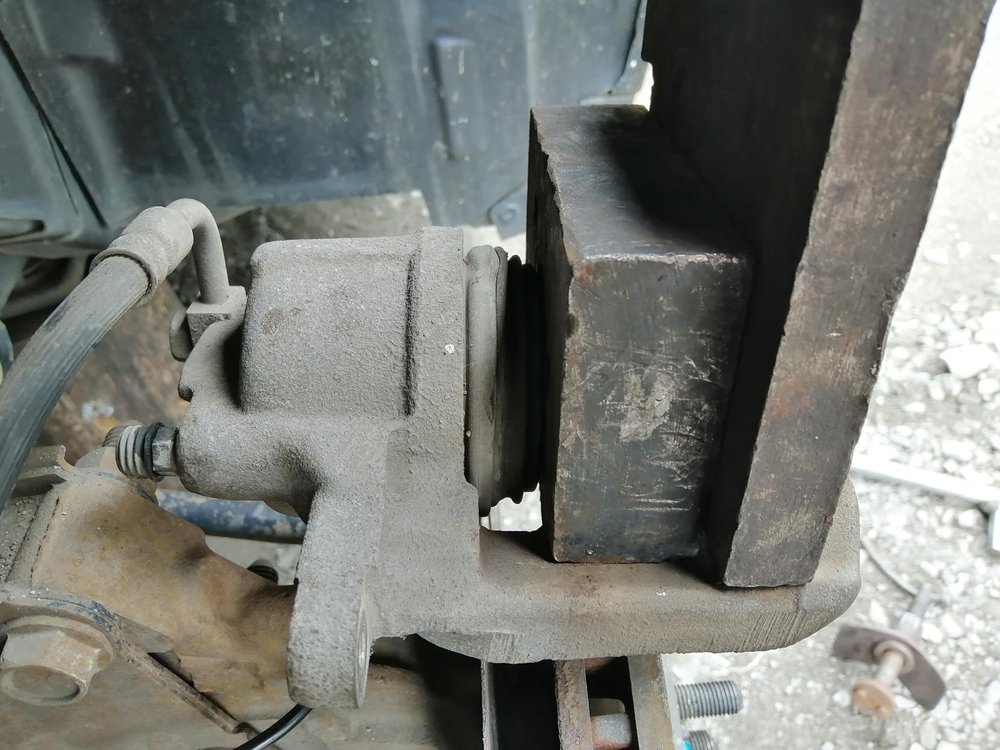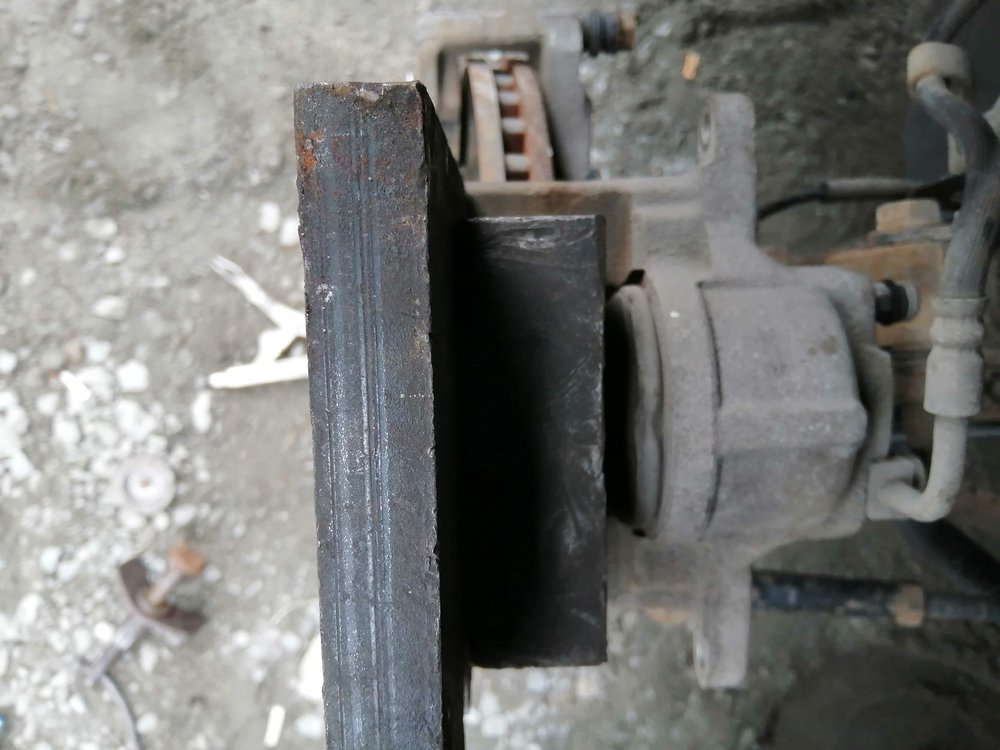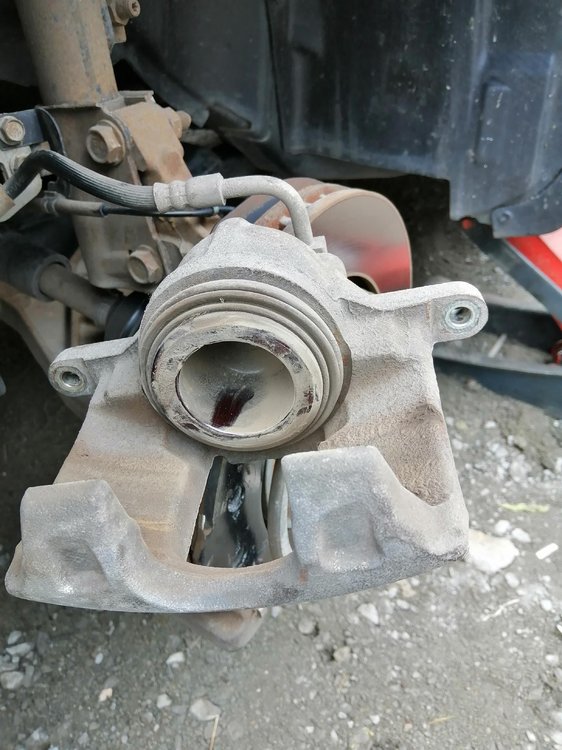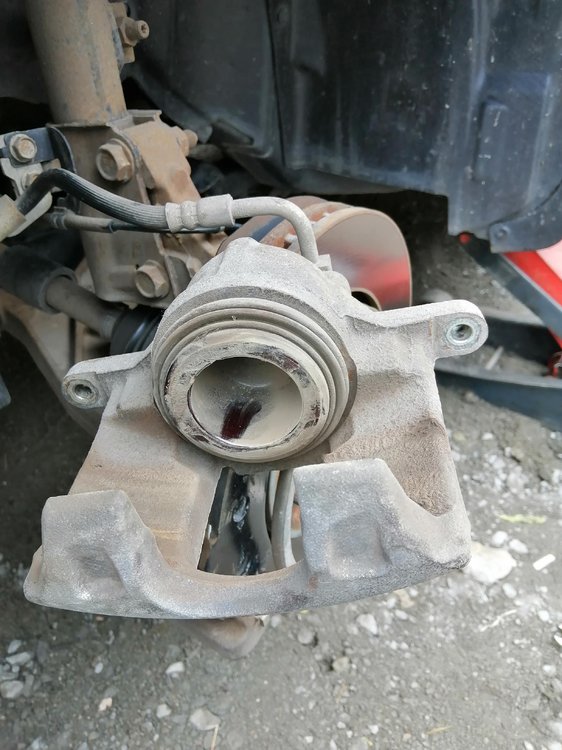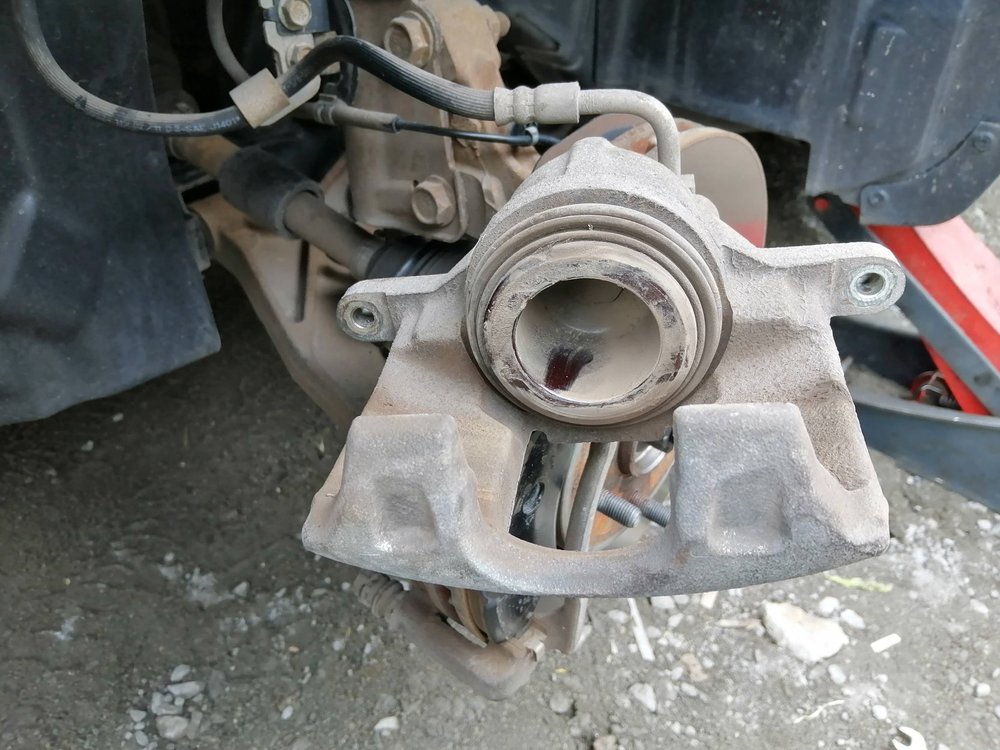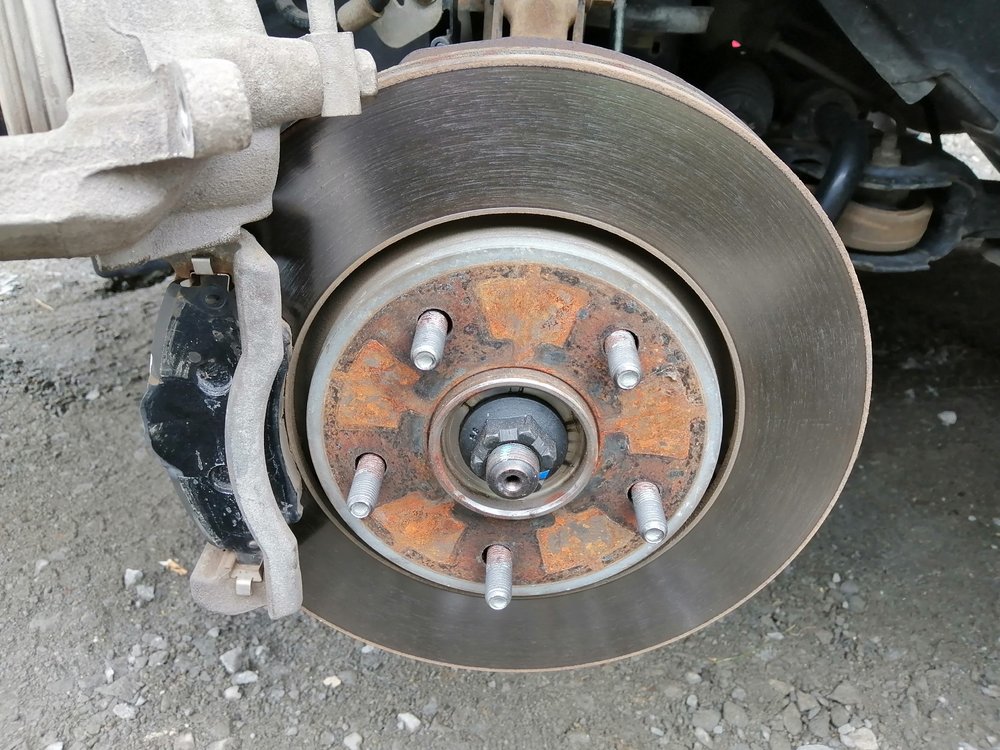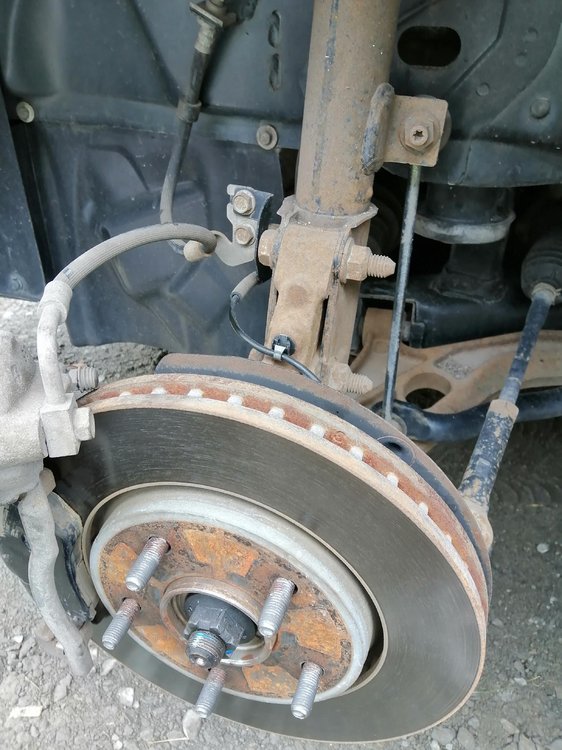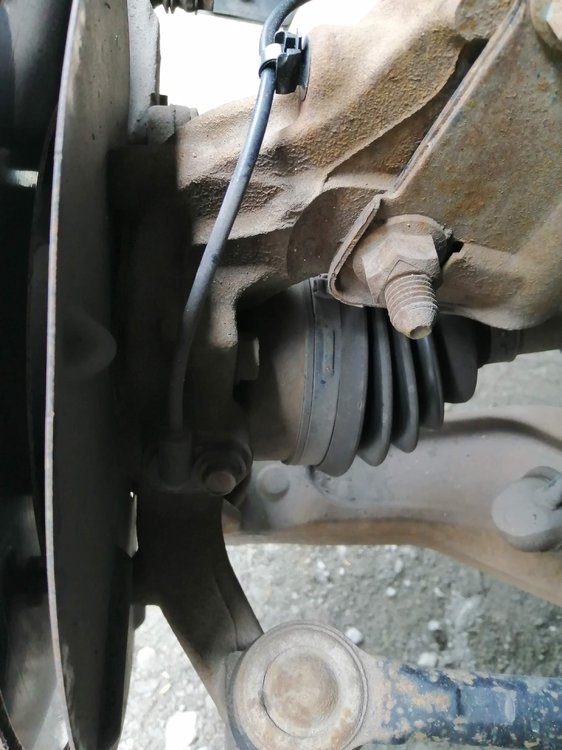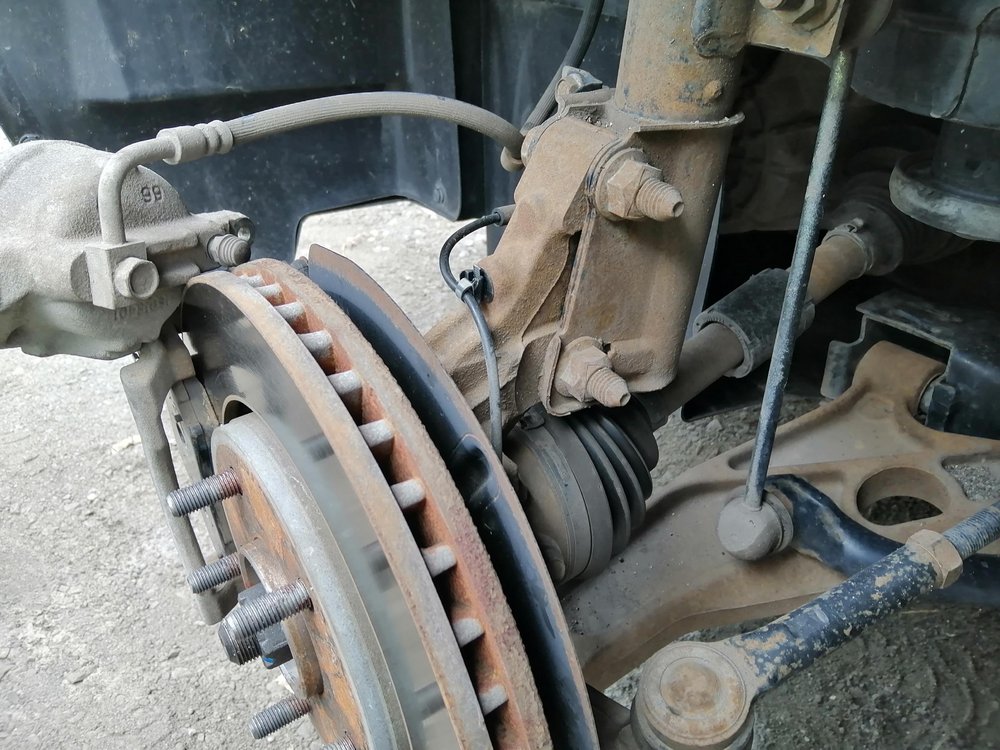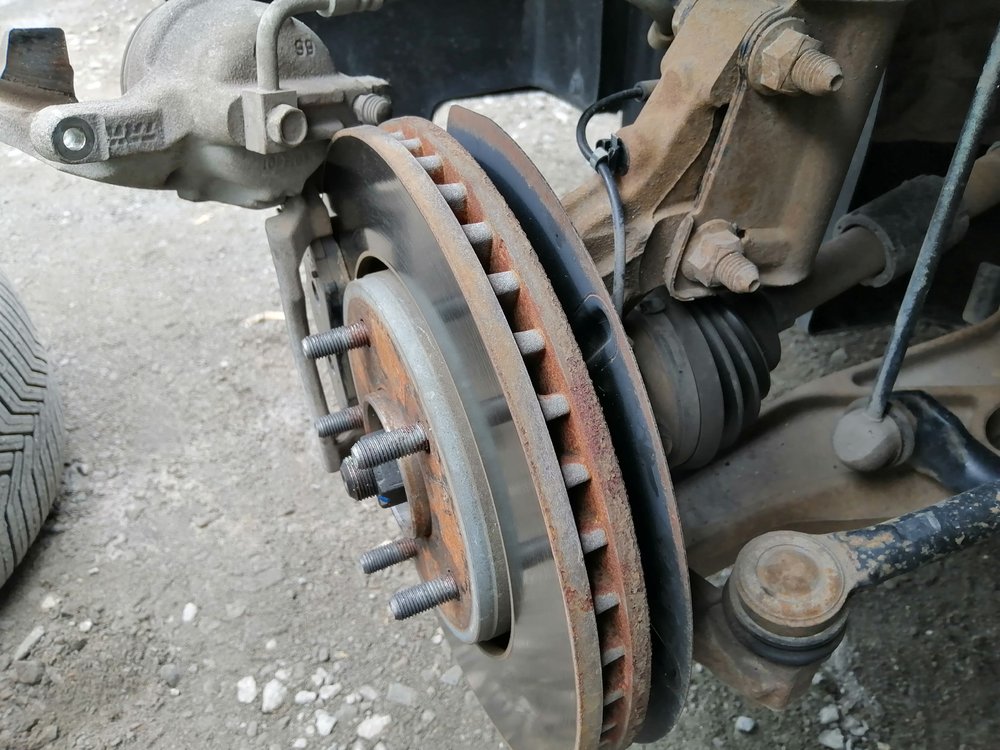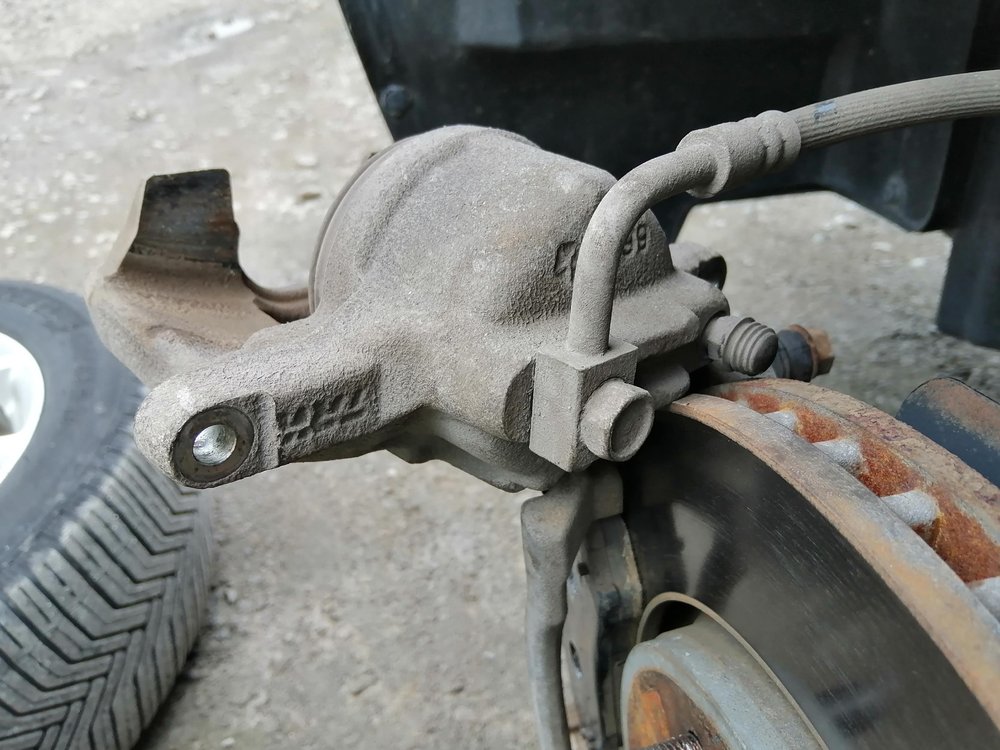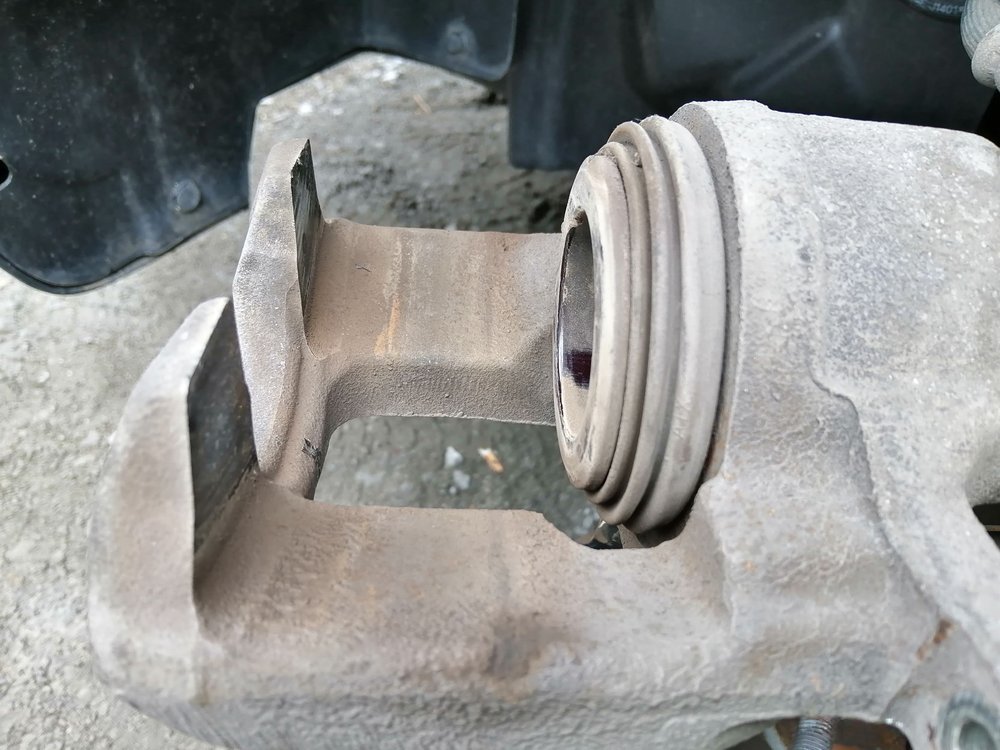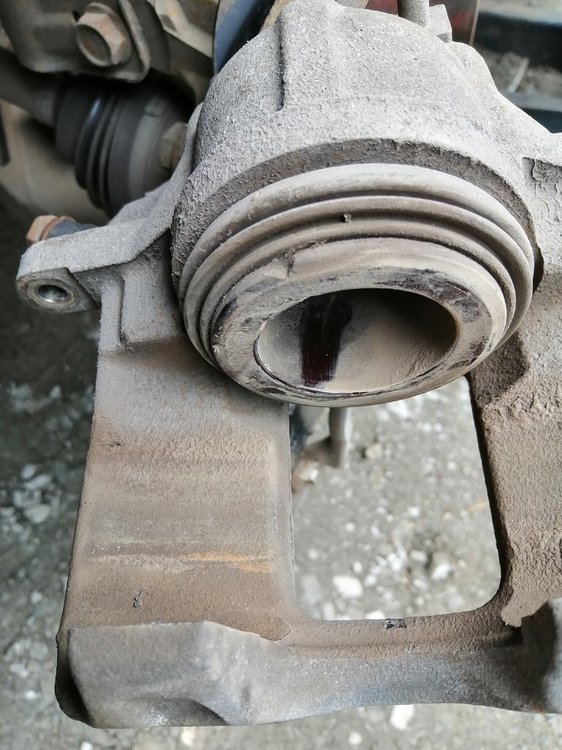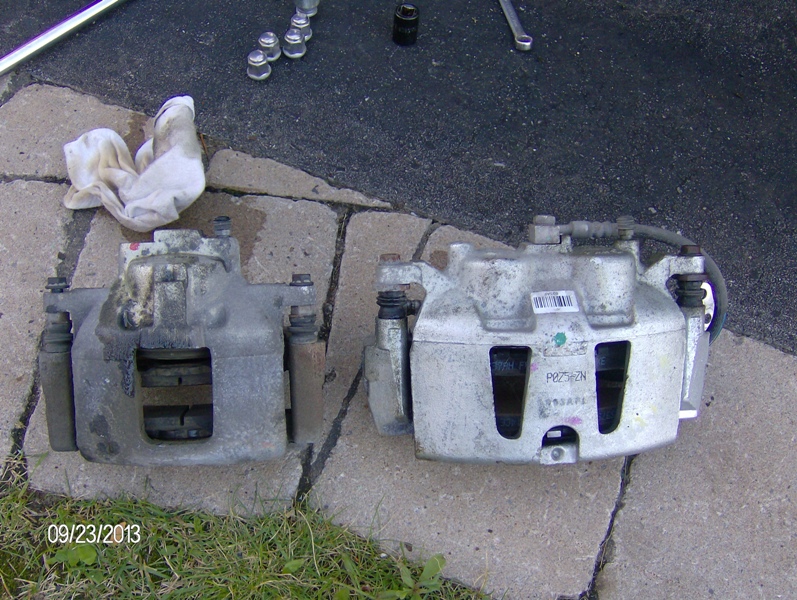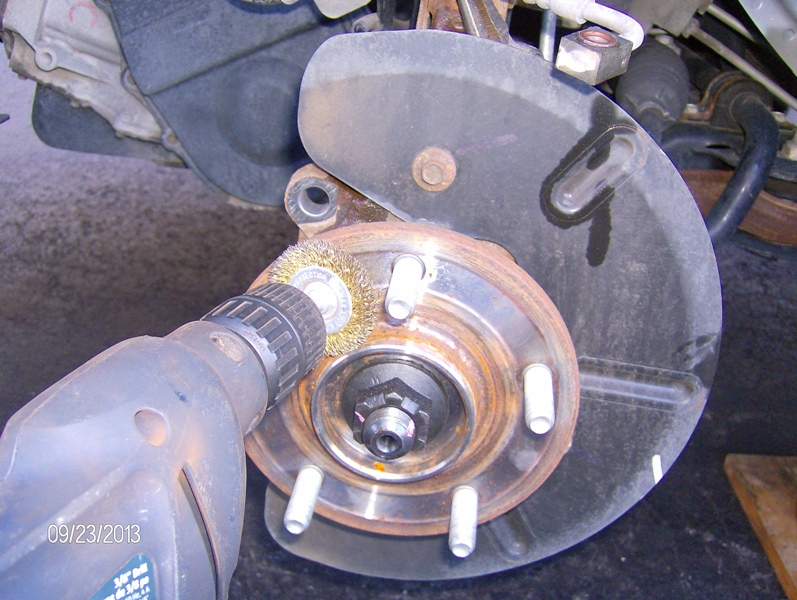
sppmaster
Journey Member-
Posts
27 -
Joined
-
Last visited
-
Days Won
1
sppmaster last won the day on January 30 2020
sppmaster had the most liked content!
About sppmaster

Profile Information
-
Region
European Union
Recent Profile Visitors
783 profile views
-
 sppmaster reacted to a post in a topic:
Upgrade Standard Brakes to Heavy Duty
sppmaster reacted to a post in a topic:
Upgrade Standard Brakes to Heavy Duty
-
I regret that I see your post so late. I don't know if I can help you seeing all that you've done but maybe you can check my posts here on this thread. Starting from the first one and reading to the last posts. Maybe you can try to repeat my tests just in order to try to pinpoint to the core of the issue. I am really amazed by the complete incompetence of the dealer service shop mechanics.
-
-
Latest update as of February 2023. I've found out the reason for this situation. I've disassembled the whole braking system and I've used a software tool to monitor the pressure inside the brake system while I've performed thoroughly various tests on the braking system. I've used plugs to block all the brake lines one by one and I've found out that the main culprit for the low and spongy brake pedal was the front right brake apparatus. Once the front right brake line was blocked with a plug the brake pedal immediately returned to its perfect old behaviour and feeling (very firm and within its normal working range movement). I've performed air bleeding several times using the conventional method and additionally I've used the scan tool to perform ABS air bleeding. There wasn't any air inside the brake system and nothing changed. The only thing I couldn't do was to completely disassemble the brake apparatus because I didn't have a spare one and I needed a working car (not stationary one). I don't know what's wrong with that particular brake apparatus, but once I realized that the brake system functioned normally (no pressure loss, brake fluid leakage, etc) I stopped rushing into the eventual brake apparatus change or its complete disassembly. Of course the main question - What is wrong with that particular brake apparatus? - remains unrevealed yet. Has anyone here made an attempt to disassemble a brake apparatus itself.
-
sppmaster started following Alfaobd , BRAKE PEDAL BLEEDS TO FLOOR WITH OMPLETE NEW BRAKE SYSTEM , 2014 Journey's brake are massive and 1 other
-
2017 Dodge Journey SE annoying suspension rattle.
sppmaster replied to Ken Brown's topic in Brake, Chassis & Suspension
Thanks for your work but can you please take pictures of the exact oversized holes and put them here. I'm not a native English speaker and just wonder where are those holes. -
 sppmaster reacted to a post in a topic:
2017 Dodge Journey SE annoying suspension rattle.
sppmaster reacted to a post in a topic:
2017 Dodge Journey SE annoying suspension rattle.
-
I've published my new findings here. The video published above still didn't help in my case but we found out interesting other things.
-
After a long delay because of the notorious pandemic crisis I continue my battle with the sinking brake pedal. I saw this post 2 weeks ago and as my symptoms were absolutely the same I believed that the problem might be in the rear brakes. Unfortunately even this one didn't solve my sinking and spongy brake pedal of Fiat Freemont (identical to Dodge Journey). We spent half a day trying to figure out the reason for the sinking brake pedal. I've got it sinking after I've changed the rear brake pads at the official service shop of Fiat 2 years ago. Today after we checked all the brake apparatus and initially couldn't find anything obvious we decided to clamp all the brake hoses. Immediately the pedal became nice and firm again as it was before the break pads change. It stopped going to the floor. After that we removed the clamps one by one and found out that when only both rear brakes were clamped the pedal was still sinking to the floor and felt spongy. When both front brakes were clamped the pedal became firm again and didn't sink anymore. When only the left front brake is clamped the pedal is still sinking but more slowly. When only the right front brake is clamped the brake pedal is almost (maybe 90-95%) completely firm and cannot go completely down to the floor. With a long pry we tried to support the front brakes and we saw that there is a little lateral movement of the two front brake apparatus when pumping the brakes. There is no visible hub play so I assume the bearings are OK. We saw that the slide pins move laterally maybe 2-3 millimeters and the brake clamps bend a little when someone pump the brake pedal. We couldn't see similar play and bending of the rear brake apparatus. Next maybe we'll have to change the slide pins to see what would happen then. It is probably obvious that we performed air bleeding 2 more times.
-
 OhareFred reacted to a post in a topic:
Sinking Brake Pedal
OhareFred reacted to a post in a topic:
Sinking Brake Pedal
-
 OhareFred reacted to a post in a topic:
Sinking Brake Pedal
OhareFred reacted to a post in a topic:
Sinking Brake Pedal
-
 Locosiete reacted to a post in a topic:
Sinking Brake Pedal
Locosiete reacted to a post in a topic:
Sinking Brake Pedal
-
Yes you've been told right... furthest first. And you are right... pre ABS era. The Left Rear Wheel (in this case particularly) is furthest from the master cylinder. The master cylinder is on the drivers side then the brake line is going to the ABS/HCU block which is on the passenger side and then going to the left rear wheel which is furthest from ABS/HCU respectively from the Brake Master Cylinder .
-
Thanks. Are you sure about the order. I've read in this NHTSA Safety Recall it is NOTE: The following wheel sequence should be used when bleeding the brake hydraulic system. The use of this wheel sequence will ensure adequate removal of all trapped air from the brake hydraulic system. Left Rear Wheel Right Front Wheel Right Rear Wheel Left Front Wheel
-
 sppmaster reacted to a post in a topic:
Sinking Brake Pedal
sppmaster reacted to a post in a topic:
Sinking Brake Pedal
-
Is there anyone here that suffered from sinking brake pedal and the video above helped him resolve the issue?
-
Successful BIG BRAKE upgrade on 2011 Crew
sppmaster replied to FROGBOX's topic in Brake, Chassis & Suspension
You are really great. Maybe in this case it'll be easier for you to take a note of the date of your posts and search your backup for pictures taken around that dates. Edit: I've got 2 pictures from webarchive - there are dates on them. -
 sppmaster reacted to a post in a topic:
Successful BIG BRAKE upgrade on 2011 Crew
sppmaster reacted to a post in a topic:
Successful BIG BRAKE upgrade on 2011 Crew
-
 sppmaster reacted to a post in a topic:
Successful BIG BRAKE upgrade on 2011 Crew
sppmaster reacted to a post in a topic:
Successful BIG BRAKE upgrade on 2011 Crew
-
 sppmaster reacted to a post in a topic:
Successful BIG BRAKE upgrade on 2011 Crew
sppmaster reacted to a post in a topic:
Successful BIG BRAKE upgrade on 2011 Crew
-
 sppmaster reacted to a post in a topic:
Successful BIG BRAKE upgrade on 2011 Crew
sppmaster reacted to a post in a topic:
Successful BIG BRAKE upgrade on 2011 Crew
-
Successful BIG BRAKE upgrade on 2011 Crew
sppmaster replied to FROGBOX's topic in Brake, Chassis & Suspension
Maybe the Author of this thread can recover the pictures. -
Successful BIG BRAKE upgrade on 2011 Crew
sppmaster replied to FROGBOX's topic in Brake, Chassis & Suspension
If anyone is able to pull it from here Internet archive here www.archive.org I've tried but I can see only a few pics. Can anyone try to pull the archived page. Maybe we still have a chance. -
Successful BIG BRAKE upgrade on 2011 Crew
sppmaster replied to FROGBOX's topic in Brake, Chassis & Suspension
Unfortunately I cannot see any pictures on the first three posts. They just don't load. Did anyone have an archive of these really useful posts (first, second and third one) to save this excellent job. -
 NavalLacrosse reacted to a post in a topic:
Soft brake pedal, bad ABS unit?
NavalLacrosse reacted to a post in a topic:
Soft brake pedal, bad ABS unit?
-
 2late4u reacted to a post in a topic:
Soft brake pedal, bad ABS unit?
2late4u reacted to a post in a topic:
Soft brake pedal, bad ABS unit?
-
 2late4u reacted to a post in a topic:
Soft brake pedal, bad ABS unit?
2late4u reacted to a post in a topic:
Soft brake pedal, bad ABS unit?
-
 Summer Solstice reacted to a post in a topic:
Soft brake pedal, bad ABS unit?
Summer Solstice reacted to a post in a topic:
Soft brake pedal, bad ABS unit?
-
I've found this too - https://www.northamericanmotoring.com/forums/stock-problems-issues/229045-another-spongy-brake-thread-after-replacing-pads-rotors.html Quote - Well, I now know why no one ever posts the resolution to this... because they're too embarrassed as to the resolution. It was the brake pads installed incorrectly. When I did the rears, I picked up two pads and they looked identical so I thought they were universal. Installed those 2, then looked at the other side, yep, identical. What I didn't realize was that I put two inner pads on one side, and two outer pads on the other side. Sooo... fixed the pads. Brakes work perfectly now! Yes, we all have dumb moments. Hopefully my admittance of stupidity will help some other poor fool out. Probably this is for the front ones.
-
I have read on another forum that this cube tool is useless. It's here - https://forums.tdiclub.com/showthread.php?t=360099 Quote of it - I bled the rear calipers just to see if maybe that would solve the problem. Lo and behold, a giant air bubble came out of the driver's side rear caliper. No air was removed from the passenger side. I sealed everything back up, topped off the brake fluid, and normal brake pedal feel and action were restored. Failure analysis: Thinking back through the events when I replaced the rear pads, I remembered that the driver's side rear caliper was the first one I worked on. I had tried to use the universal cube tool to reset the pistons and I realized that I was turning the piston the wrong way. I ended up backing the piston out of the bore to the point where it became cocked. There must have been enough of an air gap to admit a large quantity of air into the cylinder, causing the loss of pedal firmness and authority. Lessons learned: Use the proper tools (i.e.: not the useless "cube" tool) for resetting the calipers. I've found a lot of cases on different forums where the brake pedal starts sinking and parking brake not working well after the rear pads replacement (as in my case). One of the best threads is here (first post) - https://dodgeforum.com/forum/dodge-caravan/335390-2010-caravan-rear-calipers.html The solution was to screw the pistons back out and that fixed the sinking pedal and made it firm again. I saw another user opinion here - https://www.fixya.com/cars/t21869850-brake_pedal_soft Quote - Dodge journey rear calipers will not always automatically adjust after compressing them all the way to change pads. One or both of the Pistons retracts all the way creating slack. If you're able to jiggle the brake pads or rotors the caliper piston needs to be turned counter-clockwise until there's no slack but hub is still allowed to turn.

